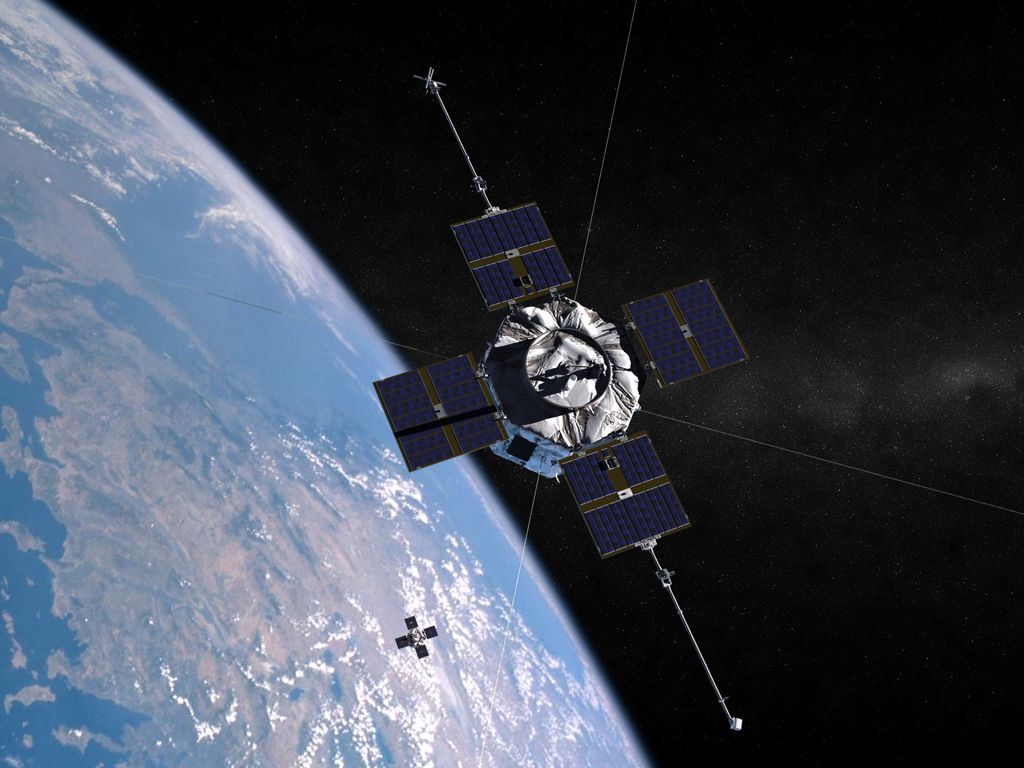
NASA has delayed the launch of twin spacecraft to study Earth's harsh radiation belts this week by 24 hours in order to iron out a possible glitch with the mission's rocket, officials announced today (Aug. 20).
The agency's Radiation Belt Storm Probes (RBSP) mission was slated to blast off early Thursday (Aug. 23) from Florida's Cape Canaveral Air Force Station atop a United Launch Alliance Atlas 5 rocket. But on Aug. 18, technicians detected an anomaly in another Atlas 5 during tests at ULA's Alabama factory, officials said. The mission will now launch on Friday morning, Aug. 24, with the window for liftoff opening at 4:07 a.m. EDT (0807 GMT).
The tested rocket engine "experienced an anomaly in the actuator system that moves the engine for steering and flight," Tim Dunn, launch director at NASA's Kennedy Space Center in Florida, told reporters today.
"The combined ULA and NASA technical team jointly agreed yesterday that additional testing and assessment is required to verify the same anomalous condition is not present on RBSP's launch vehicle engine hardware," Dunn added. [Video: Probes to Study Radiation Threat to Astronauts]
ULA and NASA officials expressed confidence that everything would be sorted out in time for Friday's launch, which is currently scheduled for 4:07 a.m. EDT (0807 GMT), with a 20-minute window.
"We think we understand what the issue is," said Vern Thorp, ULA's program manager for NASA missions. "The testing that we're doing today will build up some separation between this engine and the engine in the factory where we saw the issue."
"Overall, we're pretty optimistic that we know what's happening," Thorp added.
Sign up for the Live Science daily newsletter now
Get the world’s most fascinating discoveries delivered straight to your inbox.
The weather may be more of an issue, with thunderstorms later this week perhaps leaving Cape Canaveral's skies too cloudy for liftoff Friday morning. Officials are currently projecting a 40 percent chance of a weather-related scrub.
The $686 million RBSP mission aims to launch twin spacecraft to study the two Van Allen radiation belts, where trillions of charged particles have been trapped by Earth's magnetic field.
The inner belt usually extends from about 1,000 miles above Earth to 8,000 miles up (1,600 to 13,000 kilometers), while the outer one runs from around 12,000 to 25,000 miles (19,000 to 40,000 km). The belts are dynamic, however, and can expand greatly during solar storms.
Though the two belts were discovered in 1958 and can exert large effects on satellites, they remain mysterious today, researchers have said.
The heavily armored RBSP probes will fly through the Van Allen belts in disparate orbits, mapping out the density of charged particles there. Launching two spacecraft rather than one will allow researchers to determine whether differences in measured radiation levels indicate changes across space or time.
The two-year RBSP mission should improve scientists' understanding of how space weather affects satellites in Earth orbit, leading to better-designed and more efficient spacecraft down the road, team members have said.
"This mission is all about helping everybody understand what's really out there that they need to deal with," said Rick Fitzgerald, RBSP project manager at the Johns Hopkins Applied Physics Laboratory in Laurel, Md.
This story was provided by SPACE.com, a sister site to LiveScience. Follow SPACE.com senior writer Mike Wall on Twitter @michaeldwall or SPACE.com @Spacedotcom. We're also on Facebook and Google+.












